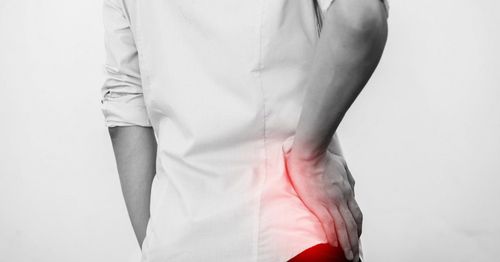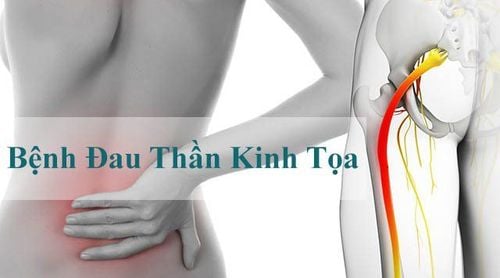This is an automatically translated article.
Sciatica is a painful nerve syndrome along the sciatic nerve and its branches. The cause of the disease is usually a herniated disc. The pain can be dull or acute and gradually increase when the patient exerts himself, changes position, or coughs or sneezes.
1. What is sciatica?
Sciatica pain is pain that radiates along the path of the sciatic nerve, which branches from the lower back through the hips, buttocks, and down each leg. Usually, sciatica affects only one side of the body.
Sciatica often occurs when a herniated disc occurs in the lumbar (lower) spine. The vertebrae (the bones that make up the spine) are separated and cushioned by round discs and connective tissues. When a disc wears out due to trauma or just years of use, its center can start to push out of the outer ring. In addition, the bones of the spine on the spine or spinal stenosis compress part of the nerve. This causes inflammation, pain, and often numbness in the legs.
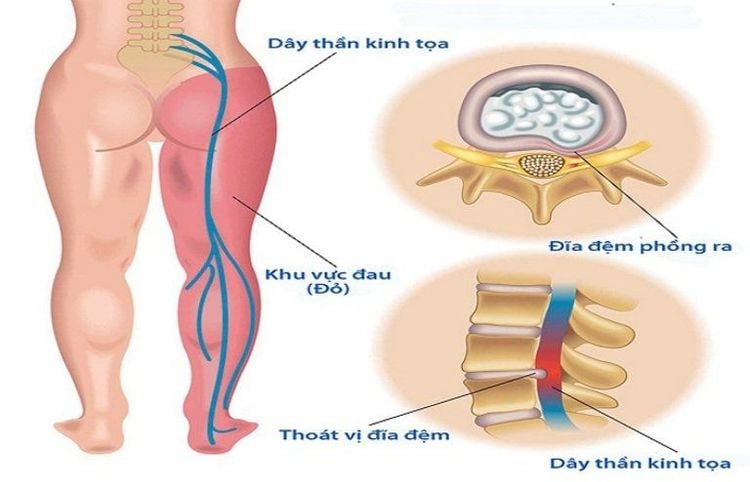
Vị trí dây thần kinh tọa
2. Sciatica symptoms
The most distinctive sign of sciatica is pain that radiates from the lower back into the back or side or legs. The pain can vary widely, from mild pain to sharp, or intense pain. Sometimes it can feel like an electric shock. Or it can be worse when coughing or sneezing, or sitting for long periods of time can also make symptoms worse.
Others may experience numbness, tingling, or muscle weakness in the legs and feet. Or there may be partial pain in the leg and numbness in some other part of the body.
Mild sciatica will usually go away with time. However, if the pain is increasing and persists for more than a week or the pain is getting worse and worse, it is necessary to see a specialist for appropriate treatment. People who need medical attention and medical services when experiencing sudden, severe pain in the back or legs and numbness or weakness in the legs. Or pain after a trauma like a car accident, or trouble with bowel and bladder control.
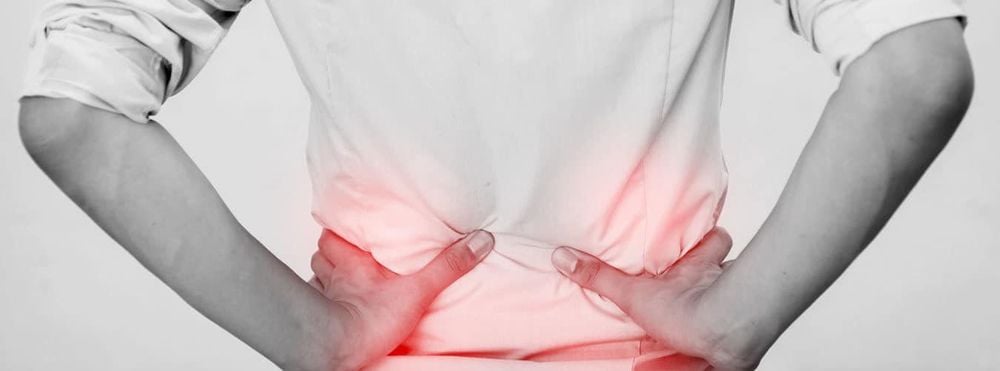
Đau thần kinh tọa vùng lưng dưới
3. Factors that increase the risk of sciatica
3.1 Age Age-related changes in the spine, such as herniated discs and spina bifida, are the most common causes of sciatica. Most people with sciatica are between the ages of 30 and 50.
3.2 Weight Gaining extra weight that can put pressure on the spine means that overweight people or pregnant women are more likely to have a herniated disc.
3.3 Diabetes This condition affects the way the body uses blood sugar, increasing the risk of nerve damage.

Bệnh tiểu đường có liên quan đến đau thần kinh tọa
3.4 Due to the nature of the job Jobs that require turning around, carrying heavy loads or driving a motor vehicle for long periods of time can play a role in sciatica. Either prolonged sitting or a sedentary lifestyle are more likely to develop sciatica than people who are regularly active.
4. Complications of sciatica
Although most people with sciatica make a full recovery, if left untreated, sciatica can cause permanent nerve damage. And here are some signs of sciatica complications that need to be examined and treated early: Loss of sensation in the legs, leg muscle weakness, loss of bowel or bladder function.5. Measures to prevent sciatica
It is not always possible to prevent sciatica and it can recur. However, doing these things can help reduce pain and improve sciatica.
Exercise regularly . In order to keep the back working properly, especially the core muscles such as the abs, lower back muscles - are essential muscles for proper posture and alignment. Maintain proper posture while sitting. The sitting position should be chosen with good lower back support, with armrests and a swivel base. A pillow or rolled towel can be placed behind the back to maintain the normal curve of the back. Keep your knees and hips at the right height for your sitting position.
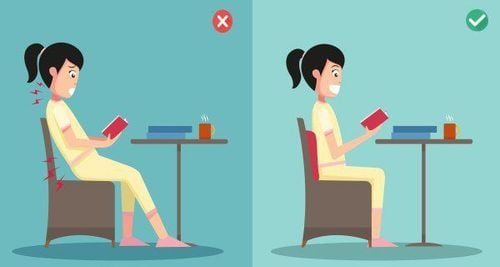
Duy trì tư thế ngồi phù hợp giúp phòng bệnh đau thần kinh tọa
Use body mechanics. If standing for long periods of time, place one foot on a chair or small box from time to time. When you want to lift or carry heavy objects, let the lower limbs do the work. Keep your back straight and bend only at the knees. Avoid lifting heavy objects and changing positions at the same time. Patients with sciatica can go to Vinmec International General Hospital for examination and treatment. Here, there is a team of well-trained, experienced and specialized neuroendocrine doctors in the examination and treatment of diseases related to the central nervous system and the peripheral nervous system. Modern equipment, meeting international standards for high efficiency in diagnosis and treatment.




